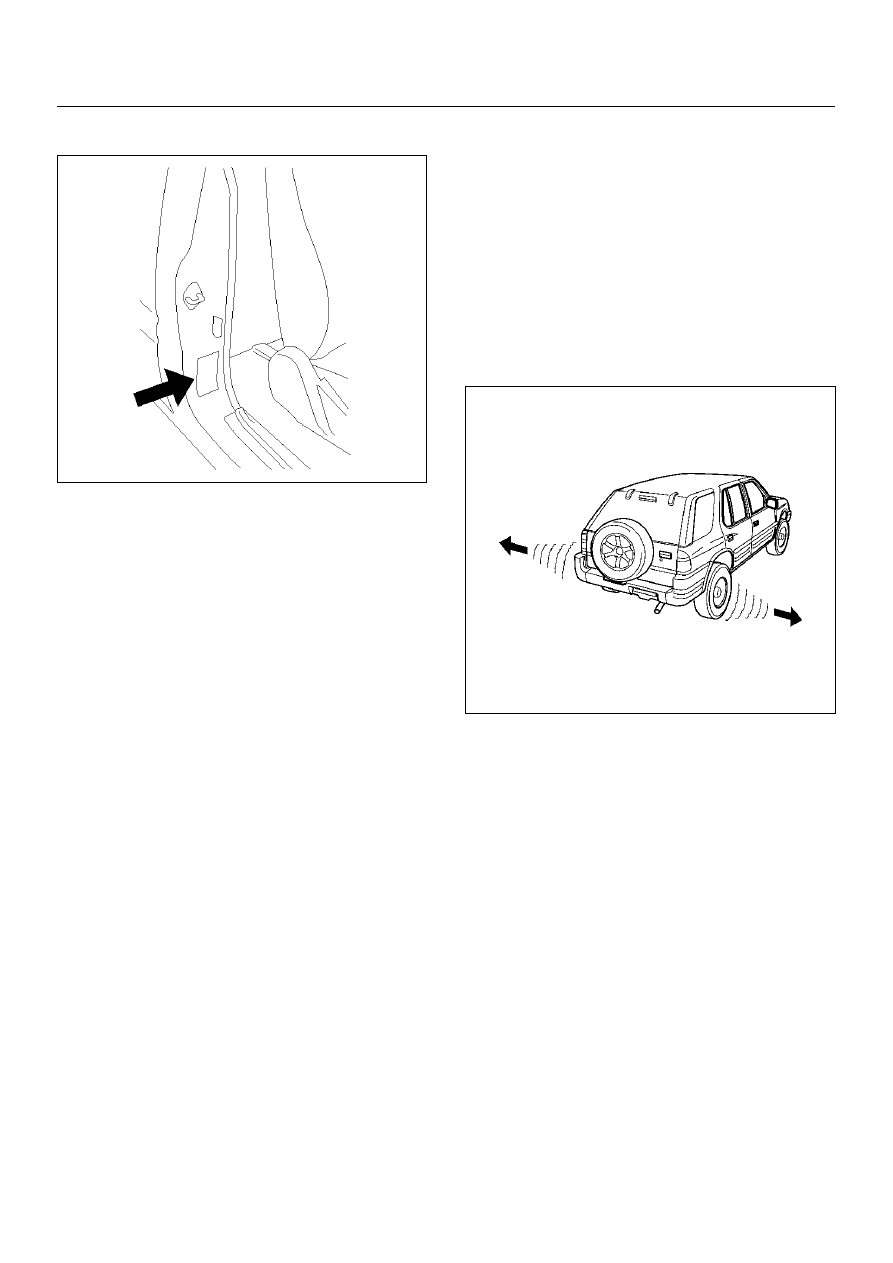Opel Frontera UE. Manual - part 68

WHEEL AND TIRE SYSTEM
3E–7
Inflation of Tires
710RX004
Tire pressure, in cold condition (after vehicle has set for
three hours or more, and driven less than one mile),
should be checked monthly or before any extended trip.
Tire pressure increases approximately 15% when the
tires become hot during driving. Tire pressure
specification is shown on the label located on the left
door lock pillar.
NOTE: Check the tire pressure whenever irregular wear
is found. Tire inflation greatly affects tire wear. If the
alignment check does not reveal any alignment
problems, check the condition of the shock absorbers
and wheel/tire balance.
Diagnosis List
If the following conditions are noted, rotation is required.
1. Front tire wear is different from rear.
2. Uneven wear exists across the tread of any tire.
3. Left and right front tire wear is unequal.
4. Left and right rear tire wear is unequal.
If the following conditions are noted, check the wheel
alignment.
1. Left and right front tire wear is unequal.
2. Uneven wear exists across the tread of any tire.
3. Front tire treads have scuffed appearance with
“feather" edges on one side of tread ribs or blocks.
4. There is cupping, flat spotting etc.
Higher than recommended pressure can cause:
1. Hard ride.
2. Poor steering stability.
3. Rapid and uneven wear at center of the tread.
Lower than recommended pressure can cause:
1. Tire squeal on turns.
2. Hard steering.
3. Rapid and uneven wear on the edges of the tread.
4. Tire rim bruises and rupture.
5. Tire cord breakage.
6. High tire temperatures.
7. Reduced handling.
8. Reduced fuel economy.
Unequal pressure on same axle can cause:
1. Uneven braking.
2. Steering lead.
3. Reduced handling.
4. Swerve on acceleration.
Radial Tire Waddle
480RW011
Waddle is side-to-side movement at the front and/or
rear of the car. It can be caused by the steel belt not
being straight within the tire, or by excessive lateral
runout of the tire or wheel. It is most noticeable at low
speed, about 8 to 48 km/h (5 to 30 mph). It may also
cause rough ride at 80 to 113 km/h (50 to 70 mph).
The car can be road tested to see which end of the car
has the faulty tire. If the tire causing the waddle is on
the rear, the rear end of the car will “waddle". From the
driver's seat, it feels as if someone is pushing on the
side of the car.
If the faulty tire is on the front, the waddle is more easily
seen. The front sh eet metal appears to be moving back
and forth. It feels as if the driver's seat is the pivot point
in the car.
Another more time-consuming method of determining
the faulty tire is substituting tire and wheel assemblies
that are known to be good. Follow these steps:
1. Drive the car to determine if the waddle is coming
from the front or rear.
2. Install tire and wheel assemblies known to be good
(from a similar car) in place of those on the end of
the car which is waddling. If the waddle cannot be
isolated to front or rear, start with the rear tires.